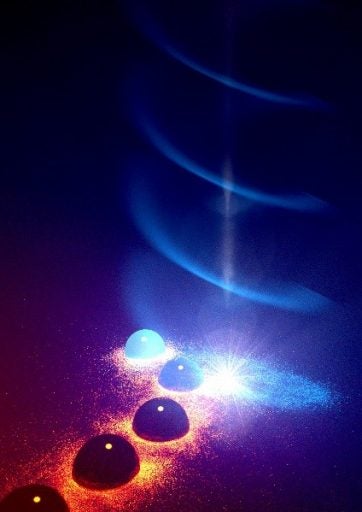A new study of light by UCF optics and photonics researchers has detected a type of force that can push particles sideways, opening up new prospects for applications in biology, colloidal physics, chemistry and other fields.
Aside from just carrying information – the most efficient transfer of information today is through optical fibers – light can also produce mechanical action. In the cover story for the current edition of Nature Photonics, the research team has shown that when the symmetry of scattered light is broken, the newly detected type of force appears and pushes sideways small particles floating on a surface.
This force is different from the usual push away from a source of light. A comet’s tail, for instance, points away from the sun because of the light’s pressure – whether the comet is approaching or has passed by.
The research, “Dynamic consequences of optical spin-orbit interaction,” has demonstrated that light forces do not necessarily push forward, adding to the team’s research two years ago that showed light can also pull small objects in a manner similar to a “tractor-beam,” said Aristide Dogariu, one of the team members and a UCF Pegasus professor of optics and photonics.
These unusual opto-mechanical effects provide new possibilities for efficient manipulation of microparticles, Dogariu said.
“Our work is fundamental. It establishes the physics of a new type of forces acting at interfaces,” he said. “The next step would be to implement this type of optical control for applications in drug delivery, chemical engineering of soft condensed matter, etcetera.”
Other authors on the study are research scientist Sergey Sukhov and Ph.D. student Veerachart Kajorndejnukul, also from CREOL (Center for Research and Education in Optics and Lasers) in UCF’s College of Optics and Photonics, and Ph.D. student Roxana Rezvani Naraghi from the Department of Physics.
The study was partially funded by a grant from the National Science Foundation.
